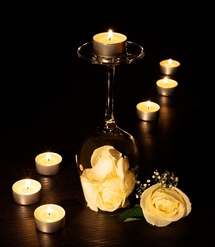Cremation Process
Understanding the Cremation Process
Cremation is an increasingly chosen form of final disposition that offers a simpler, often less expensive, and flexible alternative to traditional burial. If you or your family are considering cremation, understanding the process can help in making informed decisions during a difficult time. Below, we outline the key steps involved in the cremation process.
Authorization and Documentation
Before cremation can occur, legal documentation is required. This typically involves obtaining a death certificate and completing a cremation authorization form. These documents ensure that cremation is carried out legally and with respect for the deceased’s wishes.
Preparing the Body
Depending on the preferences of the deceased and their family, the body may be cleaned, dressed, and possibly embalmed, especially if a public viewing is planned before the cremation. However, embalming is not a requirement for cremation.
The Cremation Container
The body is placed in a cremation container which can be a simple cardboard box or a more traditional casket designed for cremation. The choice largely depends on personal preferences, environmental considerations, and budget.
The Cremation Process
Cremation is carried out in a specialized furnace called a crematorium, which reaches high temperatures (1400 to 1800 degrees Fahrenheit). The intense heat reduces the body to bone fragments in a process that takes about 4 to 6 hours for an average adult.
Processing the Remains
After the cremation, the remains, which consist of bone fragments, are carefully removed from the crematorium and processed into a finer consistency, often referred to as “ashes.” This is what is returned to the family, usually in a temporary urn unless a specific urn has been pre-selected.
Returning the Ashes
The ashes are given to the family in an urn or another chosen vessel. Some families choose to keep the ashes in a memorial urn at home, scatter them in a meaningful location, bury them in a cemetery, or incorporate them into memorial objects like jewelry.
Memorialization
Even with cremation, many families opt for a form of memorialization. This can include a memorial service with the urn present, interment of the urn in a cemetery, or placing the urn in a columbarium niche where it can be visited by loved ones.
Choosing Cremation: Points to Consider
Cremation offers several benefits, including cost-effectiveness, flexibility in memorialization, and the option for a more environmentally friendly choice compared to traditional burials. However, it’s important to consider personal, cultural, and religious beliefs when deciding if cremation is the right choice for you or your loved one.
Final Thoughts
Understanding the cremation process can demystify concerns and help families make decisions that honor the life and preferences of their loved one. As you navigate these choices, remember that cremation providers are here to support and guide you through every step of this process.
For families and individuals exploring the option of cremation, being informed about each stage of the process can provide comfort and clarity during a time of loss. Whether you are pre-planning or making immediate arrangements, consider discussing your wishes and any questions you may have with Peace of Mind Cremation Services.

PEACE OF MIND CREMATION SERVICES
Serving Southern Alberta
PHONE: (403) 687-3300
EMAIL: peaceofmindcremationservices@gmail.com
